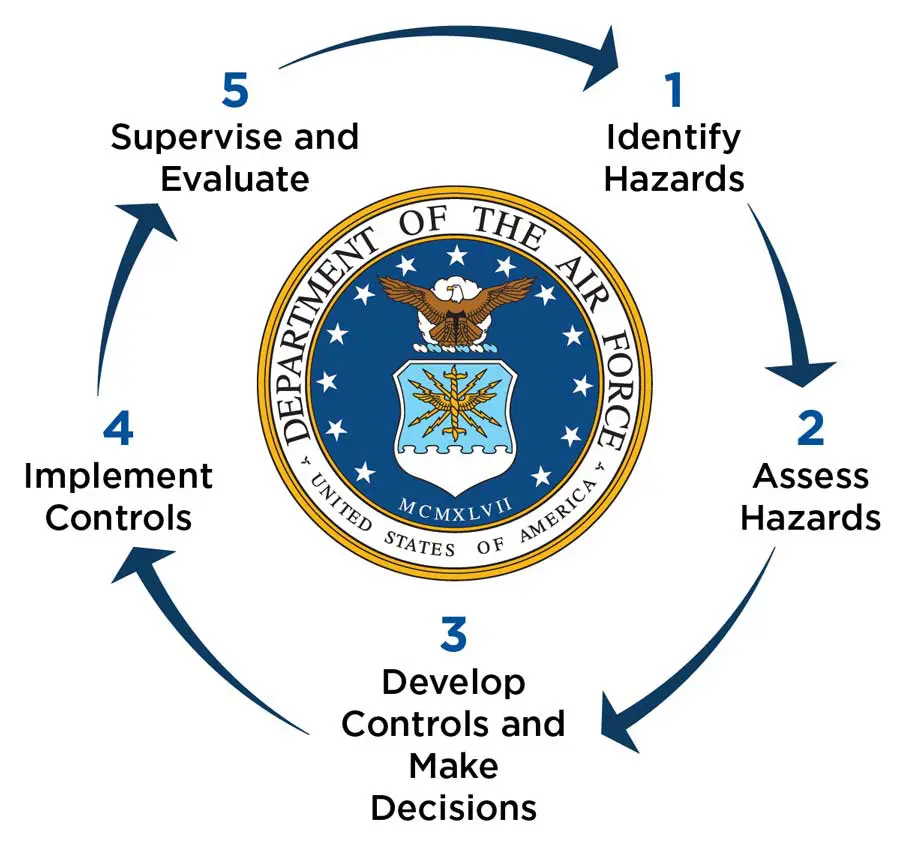Personal and Professional Risk Management
By Ms. Michelle Piehl, Staff Writer
Risk management is the process of determining risk and the likelihood of negative consequences occurring. Military units often emphasize operational risk management, but personal accountability and risk mitigation are essential both in and out of the field.
Four principles inform risk management in the Air Force.
- Accept no unnecessary risk.
- Make risk decisions at the appropriate level.
- Integrate risk management into operations, activities, and planning at all levels.
- Apply the process cyclically and continually.
According to the Air Force Safety Center, “At work and home, smart Risk Management serves as the foundation of our Air Force safety program and personal choices while off duty.” Cyclical risk-management planning ensures that no situation flies under the radar.
The Air Force defines the Risk Management Cycle as follows:
- Identify Hazards
- Assess Hazards
- Develop Controls and Make Decisions
- Implement Controls
- Supervise and Evaluate
Repeating these steps throughout any situation helps to ensure that no risk is taken without the proper precautionary steps to mitigate hazards.
Expect the Unexpected
When planning field exercises, recreational activities, or day-to-day tasks, remember that situational awareness is paramount. Although perfect plans do not exist, a well-thought-out, highly detailed analysis can help to avoid negative consequences. Understanding the situation, knowing the environment, and maintaining appropriate controls also help mitigate risk.
When events occur in real-time, planning time becomes severely limited. Implementing controls during planning provides resources during execution, according to the Air Force Safety Center. Controls may include, but are not limited to, safety measures, proper instruction, equipment maintenance, formal risk assessments, checklists, standard operations procedures, personal protective equipment, safety evaluations for personnel and equipment, emergency planning, personnel well-being, and environmental assessments.
Proper Maintenance
As a member of today’s military, keeping the body and mind in the best shape possible is imperative. The Air Force Safety Center calls the human resource the “Human Weapon System,” providing several ideas for maintaining the complex needs of this system.
“To maintain the Human Weapon System in peak condition, it must be fed, hydrated, and rested. It needs frequent breaks from intense concentration and work where the mind can be rested and rejuvenated. We know we need to put effort into maintaining balance physically, emotionally, and spiritually,” says the Air Force Safety Center.
The Air Force Safety Center emphasizes the following traits, skills, and characteristics for optimizing the Human Weapons System:
- Core Values
- Nutritional Health
- Mental and Physical Adaptiveness
- Confidence and Innovation
- Mental Toughness
- Technical Expertise
- Risk Awareness
- Recovery
- Mindfulness and Spirituality
- Leadership and Mentorship
- Physical Fitness
- Restorative Sleep
- Balanced Work and Personal Life
- Family and Social Support
- Education and Experience
Maintaining personal wellness ensures force readiness for military units.
Tools of the Trade
A Risk Assessment Matrix determines the level of risk based on the probability of severe effects resulting from a given hazard. Risk assessments may vary by unit, activity, or event, but their purpose remains the same: assess hazards, mitigate hazards, and control hazards.
In a risk assessment matrix developed by the Air Force Safety Center, risk is measured at incremental levels based on the intersection of hazard severity and frequency of occurrence over time, with each increment ranked as low, medium, high, or extremely high risk.
Wrap Up
Creating plans, implementing safeguards, and deploying real-time mitigation strategies ensure that personal and professional activities can be safe, secure, and sound.
Reference
U.S. Air Force Safety Center. “Risk Management.” https://www.safety.af.mil/Risk-Management/.


